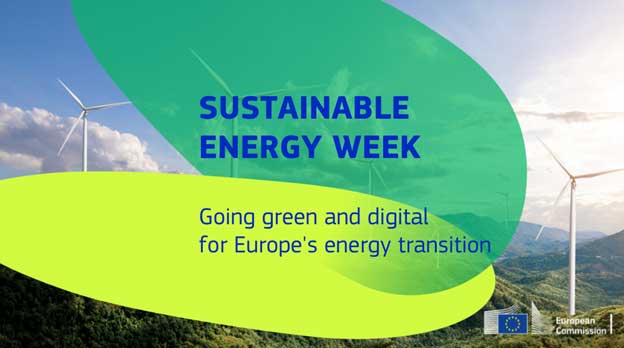Making the Energy Transition a Reality in the Pacific — Global Issues
BANGKOK, Thailand, Feb 09 (IPS) – The last three years have seen the Pacific impacted negatively due to the COVID-19 pandemic. The tourism industry, a key source of national revenue and jobs creation, received a severe blow due to closure of borders and reduced travel.
In April 2020, a major cyclone caused widespread destruction in the Solomon Islands, Vanuatu, Fiji and Tonga. In early 2022, a volcanic eruption in Tonga further caused significant damage to domestic physical infrastructure.
Adding to these existing pressures, the food, fuel and finance crises have had a crippling impact on national economies throughout the Pacific. The vulnerabilities to both manmade and natural disasters are all but obvious. There is a need for an acceleration of transformative energy policy actions and ambitions.
Growing costs of fuel imports
A glance at the data shows that most Pacific countries – particularly the Small Island Developing States (SIDS) – remain highly dependent on imported petroleum fuels and are expected to do so for many years.
Outside of Australia and New Zealand, oil makes up about 80 per cent of the Pacific’s total energy supply, of which 52 per cent is used for transport, 37 per cent for electricity generation and 12 per cent for other applications such as process heating. Renewable energy accounts for only 17 per cent of the total energy supply.
Fuel imports cost the region US$6 billion annually, or around 5 to 15 per cent of GDP for each economy. This is an enormous economic burden. With its vast natural resources, a history and culture of independence and subsistence together with its low energy intensity, the Pacific subregion offers great advantages for energy transition leadership. So, there are solutions to alleviate this cost.
ESCAP’s new report – Pacific Perspectives 2022: Accelerating Climate Action – makes the case for a rapid transition of the Pacific’s energy sector away from fossil fuel imports and to increase access to modern energy services to deliver Sustainable Development Goal 7 (SDG 7) in harmony with global climate goals.
This strengthens the case for alleviating reliance on imported fossil fuels. A move to locally generated renewable energy sources is supported by both the economic gains and the energy security benefits.
Advancing the implementation of SDG 7
It is widely recognized that the Pacific is not on track to deliver universal access to clean cooking fuels and technology by 2030. In fact, this target may present one of the largest hurdles to achieving SDG 7.
However, experts have recognized that energy access is best achieved through utilization of solar energy, and for many of those who remain without electricity across the Pacific, the best access solution will be the installation of stand-alone solar home systems.
Experts now suggest moving beyond minimum levels of electricity access and employing metrics such as multi-tier frameworks or the “modern energy minimum” of consumption of at least 1,000 kWh per year as a better indicator of access.
On the other hand, the rates of access to clean cooking fuels and technologies are amongst the lowest in the world as depicted in the chart below. In 2020, almost 10 million people across the Pacific lacked access to clean cooking, the bulk of whom (8.1 million people) were in Papua New Guinea. Furthermore, the rate of access to clean cooking in many countries is stagnating and, in some cases, even declining.

Focusing on solution-oriented energy transition policies
A wide range of policy interventions and intergovernmental mechanisms are available to support policymakers to address the issues of over-reliance on fossil fuels and the lack of access to modern energy.
Firstly, renewable energy offers some very low hanging fruit. As imported petroleum accounts for about 72 per cent of the electricity supply and almost 100 per cent of transport energy; renewable sources can in many situations deliver clean energy at a lower cost. Developing infrastructure to support the shift to electric vehicles offers an opportunity to channel renewable energy into the transport sector.
Secondly, the business case for energy efficiency is strong and brings with it the potential to reduce energy demand across multiple sectors. However, a large proportion of these opportunities remain unfulfilled.
Finally, policymakers should collaborate through existing Pacific regional initiatives to support the scaling-up of local capability and capacity through coordinated training and knowledge transfer in the area of energy transition.
Readers will find further details and policy recommendations in the report which is now available on the ESCAP website.
By putting people at the center of policymaking, the ESCAP Commission remains the most agile and vibrant anchor to accelerate energy transition and promote regional solidarity.
While it raises some complex questions, researchers have analysed the relationship between energy efficiency and demand response in various situations and determined that a high degree of complementarity is possible.
David Ferrari is ESCAP Consultant, Sudip Ranjan Basu is Deputy Head and Senior Economic Affairs Officer and Kimberly Roseberry is Economic Affairs Officer
IPS UN Bureau
Follow @IPSNewsUNBureau
Follow IPS News UN Bureau on Instagram
© Inter Press Service (2023) — All Rights ReservedOriginal source: Inter Press Service
Check out our Latest News and Follow us at Facebook
Original Source






